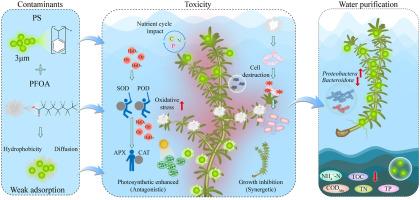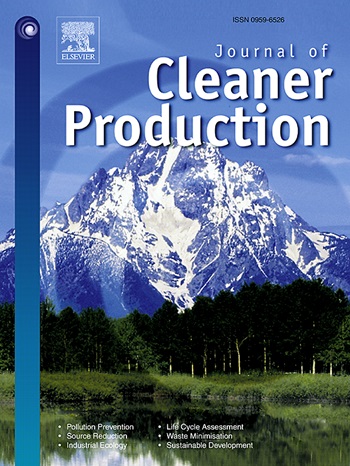Synergetic and antagonistic effects of microplastics and perfluorooctanoic acid on constructive species in freshwater ecosystems
IF 9.7
1区 环境科学与生态学
Q1 ENGINEERING, ENVIRONMENTAL
引用次数: 0
Abstract
MPs and PFOA are widely found in water, and both are capable of causing different levels of damage to each organism. However, plant activities might alter the environmental behavior of MPs and PFOA during phytoremediation. In this study, based on Abotts equation and combined with correlation analysis, we revealed and evaluated the combined toxic effects and water purification capacity of predetermined concentrations of PS and PFOA on H. verticillata, and analyzed the adsorption kinetics of PS to PFOA. The results showed that PS and PFOA altered the biofilm permeability of H. verticillata and inhibited plant growth (synergistic). In contrast, at low concentration combinations, PS adsorption of PFOA reduced the utilization of PFOA by H. verticillata and weakened their respective inhibition of photosynthesis in H. verticillata (antagonistic). During this period, H. verticillata resisted PS and PFOA stress by activating CAT and APX, respectively, and reutilized nutrients for compensatory growth. This suggests that the combined effect of PS-PFOA co-pollutants is related to concentration ratio, site of action and species specificity. Meanwhile, H. verticillata synergized with the biological communities affected by the co-pollutant to purify the water and effectively remove PS and PFOA. This study provides new insights for assessing the ecological effects of MPs-PFAS co-pollution and provides a theoretical basis for improving phytoremediation.

求助全文
约1分钟内获得全文
求助全文
来源期刊

Journal of Cleaner Production
环境科学-工程:环境
CiteScore
20.40
自引率
9.00%
发文量
4720
审稿时长
111 days
期刊介绍:
The Journal of Cleaner Production is an international, transdisciplinary journal that addresses and discusses theoretical and practical Cleaner Production, Environmental, and Sustainability issues. It aims to help societies become more sustainable by focusing on the concept of 'Cleaner Production', which aims at preventing waste production and increasing efficiencies in energy, water, resources, and human capital use. The journal serves as a platform for corporations, governments, education institutions, regions, and societies to engage in discussions and research related to Cleaner Production, environmental, and sustainability practices.
 求助内容:
求助内容: 应助结果提醒方式:
应助结果提醒方式:


